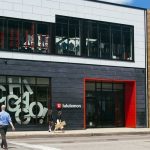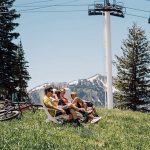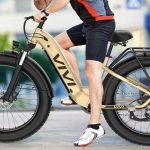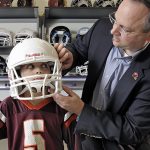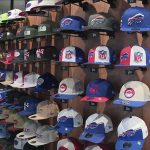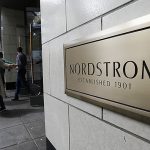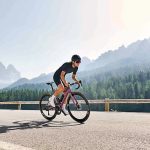While speakers at last week's Piper Jaffray retail conference in New York came loaded with stories about what they're doing to cut costs and inventories, most also touted plans to get growth going again.
Perry Ellis highlighted the growth potential of its newly acquired Callaway apparel license while Volcom talked up its Electric Visual Evolution eyewear brand and Merrell believes it finally hit it right with its apparel collection. Iconix said it's still in a buying mood and highlighted its Wal-Mart opportunity. On the retail side, Cabela's emphasized how its smaller “Next Generation” stores will drive its next wave of expansion. Famous Footwear discussed how new brands such as Puma and Birkenstock are helping it better connect with consumers. Only Genesco spent a considerable amount of time discussing cost savings, particularly in landlord negotiations.
Perry Ellis highlighted the growth potential of its newly acquired Callaway apparel license while Volcom talked up its Electric Visual Evolution eyewear brand and Merrell believes it finally hit it right with its apparel collection. Iconix said it's still in a buying mood and highlighted its Wal-Mart opportunity. On the retail side, Cabela's emphasized how its smaller “Next Generation” stores will drive its next wave of expansion. Famous Footwear discussed how new brands such as Puma and Birkenstock are helping it better connect with consumers. Only Genesco spent a considerable amount of time discussing cost savings, particularly in landlord negotiations.
According to a release following Golfsmiths presentation at the conference, management for the golf retailer affirmed that the company was gaining market share and said they expect cash flow to remain positive for the rest of the fiscal year. Management also lauded recent openings of “Golfsmith Xtreme” concept stores and said they anticipate similar success with the November 2009 opening of the newest concept store in Irvine, CA.
The Golfsmith Xtreme concept features extra-large stores (30,000-40,000 sq. ft.) that promote an interactive environment for customers.
Management also highlighted $2.3 million in cost-cuts that have already been implemented in 2009 and laid out plans to save another $3.4 million in operational efficiencies that will come from increasing efficiency within distribution, implementing process improvements and negotiating lease terms, among other measures.
In store, Golfsmith hopes to refine the store model by reducing rent and optimizing payroll while utilizing marketing costs by conducting grassroots testing and shifting spending to the highest return.
Management added that it hopes to reduce inventory levels in 2009 and 2010 by about 5% to 7% while reducing excess and obsolete inventory and negotiating improvements on vendor terms.
The negative trend is expected to continue at least through Q309 while store unit/square footage growth will taper.
With over $153 million in new funding from a just-completed secondary offering, Iconix Brand Group plans to be “very aggressive” in hunt for acquisitions over the next few months as deals arrive in the downturn.
“We have been working on some really exciting opportunities out there,” said Neil Cole, chairman and CEO, at Piper Jaffrey's conference. “I think sellers are starting to realize what values are. We will continue to remain disciplined in our acquisition strategy, but we also believe that there are some great opportunities, that we hope to act on very soon over the next couple of months.”
A particular growth emphasis will be placed on DTR (direct-to-retail), in which retailers attain brands on an exclusive basis as private brands. DTR accounted for a quarter of its revenue and is expected to reach over half of total revenues this year. Much of the DTR growth this year will come from its expansion at Wal-Mart with Starter, OP, Starter and Danskin Now.
Regarding Wal-Mart, Yehuda Schmidman, ICON's SVP of operations, said growth is being helped by entering new categories. For instance, the OP brand will soon be extended to hard line areas, such as beach bikes, beach skim boards and boogie boards. Starter is moving into inflatables, and Danskin has already moved into yoga mats, and exercise videos. The second key growth driver at Wal-Mart is international, and OP has launched in Wal-Mart Canada and Wal-Mart Mexico, and will reach Argentina this fall.
Cabelas Inc. expressed optimism when discussing the incorporation of “next-generation stores” that are expected to improve return on invested capital. These stores — the first of which opened in August of 2008 — are smaller and more efficient and “enable (the company) to expedite the store development time through a standardized prototype with three different formats,” said Brian Linneman, Cabela's VP and COO.
“It improves the time-to-market, reduces our capital investment, increases the ratio of selling square footage and merchandise density as compared to our traditional destination stores,” he added. “In addition, this store format will allow us to pursue the very best retail store locations.”
Linneman noted that retail has seen revenues grow at a 26% compounded annual growth rate over the past six years. Additionally, the company said 75% of new Cabelas Club accounts come from the retail segment.
Asked what changes its new CEO, Tommy Millner (formerly of Remington) might bring to Cabela's, Linneman said he doesn't expect that the company's “core business philosophy is going to change.” But he noted that Milner “comes from more of a private equity background. He understands balance sheets. He understands the importance of return on invested capital and controlling costs.” Addressing concerns about a leader of a manufacturer taking over a retail business, Linneman said, “He's been working with retailers virtually his whole life. He understands the retail business. I think he's a great addition to Cabela's and clearly we will add a fiscal responsibility that I think we have not perhaps seen in the past.”
Perry Ellis International believes Callaway golf apparel has the potential to be a $100 million business within the next three to five years.
“The Callaway golf brand brings additional channels of distribution and price points for us,” said CEO Oscar Feldenkreis “It gives us a better-best-good strategy as we have several brands today in the golf arena — Callaway, PGA Tour, Grand Slam, as well as Links edition, and we also do private label and that the Golf World. Callaway will sell directly to the green grass channel and the sporting goods channel and we feel that this is a transitional year for both companies.”
Perry Ellis attained the license in March. Ashworth, which was acquired by TaylorMade-Adidas Golf last year, had been Callaway's apparel license maker since 2002. As it transitions to Callaway, Perry Ellis is exiting its Ping business, which did about $30 million in green grass and sporting goods channels, according to Feldenkreis.
Feldenkreis predicted” another strong” year for swim, noting that the Jantzen and Nike business “continues to be strong.” The company currently services over 3,800 doors in the golf area and branded swimwear is available in over 5,100 doors.
Zumiez believes a key difference in its business model versus other retailers is that it lets local store managers lead the training and development of the staff in the stores and also lets them guide merchandising decisions.
“At most retailers, every store looks identical, whether it's in Florida or Seattle or Los Angeles or Billings, Montana,” said Richard Brooks, Zumiez's CEO. “Our goal is exactly the opposite of that. We want every store to be unique and different. And the manager gets a big input in our store about what products go where in the store.”
Brooks said although headquarters “provides a general parameter about how we bought the product, our goal is that not only do the people reflect the market, but the product reflects the market, too. So the mix of products between locations will be different.”
Zumiez also noted that e-commerce business grew over 50% in the last year, and it plans the company intends to continue investing in IT efforts. The action sports company said that due to its increased focus on working capital and subsequent alignment of inventory, it has had a strong increase in cash. Company CFO Trevor Lang commented that this is the largest amount of cash the company has had on $200-plus million in assets, $81 million in cash, and said inventory was down 8% on a gross basis. Adding in the 53 stores ZUMZ opened subsequent to the first quarter of last year, that inventory is down 24% on a per-square-foot basis.
Pacific Sunwear said pacsun.com sales increased 46% to $44 million in fiscal 2008, due in part to the companys increased use of social networking sites such as Facebook, MySpace, YouTube, Twitter and Flickr.
The company has a five-year, $150 million asset backed credit facility good through April 2013 and with a syndicate of banks, including JPMorgan Chase, Bank of America and Wells Fargo. There are no financial covenant restrictions in this facility unless PSUN is drawn to the last 10% of availability.
Crocs Inc.s new CEO, John Duerden, has created a list of initiatives that are expected to help the company pull itself out of the declining sales and profits trend it has been experiencing for the past few quarters. The top priority is to “reconnect with our customers at wholesale.” Duerden said that of the biggest reasons for Crocs revenue decline has been the failure of the retail business and he wants to prioritize reconnecting with Crocs retail customers.
He also feels that Crocs needs to segment the market more effectively and pull out of certain channels like the Hallmark card stores.
Finally, Crocs will work to bring costs in line with revenues and scale the company to the “industry best.” He is targeting SG&A costs down to about 32% of revenue or lower by the end of 2010. So far, Crocs has dropped the workforce by 32% since December, 31, 2007.
Previously, Crocs was staffed up to support 50%+ growth, and now its costs are coming more in-line with a maturing brand and company.
With momentum gained in the past quarter, Wolverine Worldwide now sees Merrell apparel eventually reaching $150 million to $200 million in sales. With Merrell aiming to become Wolverine's first $1 billion brand, that would represent 15% to 20% of Merrell's overall sales, said Don Grimes, Wolverine's SVP and CFO.
Grimes admitted that the first Merrell apparel collection introduced in fall 2007 was “too broad” and the design wasn't consistent with Merrell footwear. But he said the company feels Merrell apparel “really hit its stride with fall 2008 and spring 2009. Our sell-in and sell-through did quite good. In fact in the first quarter of 2009, we exceeded our internal plan for Merrell apparel.”
The launch of Merrell apparel was in part a request by its retail distributor partners around the world to create “true lifestyle” stores rather than just sell footwear. At the close of the first quarter, there were 74 dedicated Merrell retail stores owned by distributor partners globally. About 100 will be in place by the end of this fiscal year.
Internally, Wolverine's overall goal to grow its own retail and e-commerce sales to 15% of revenues from 6% currently. It currently owns 90 retail locations primarily in the U.S., including 71 “value stores” primarily featuring Hush Puppies, along with 15 Track 'n Trail stores, and four Merrell concept stores including one in Whistler, Canada.
Deckers CEO Angel Martinez, laid out some aggressive growth plans for all five brands under the Deckers umbrella. The overall goal is to hit the $1 billion mark by 2012. UGG is expected to get to $750 million; Teva, $110 million; Simple, $80 million; TSUBO, $40 million; and Ahnu, $20 million. Much of this growth will come from “significant untapped international potential.” Deckers is looking for 7% to 9% growth this year and an average growth rate of 10% for 2010-2012.
The international business right now accounts for about 16% of DECKs business and Martinez believes it should be about 30% of sales.
UGG has been increasing domestic penetration throughout the United States, primarily through the expansion of shop-in-shops. The brand will have 70 shop-in-shops in the U.S. this year. The shop-in-shops showcase is 100 styles versus 40 styles in a typical account. It drives 35% to 50% increase in sales at that account.
Martinez feels that UGG has “all of the customers that we really need in the U.S.” The exception of that might be an existing customer that's expanding or, in some cases, a new retailer ideally positioned in a part of the country where the brand might have low penetration.
Teva has seen success through sales of womens lifestyle product this year, helping them gain an estimated 2.5 point market share increase. Martinez said, “The retailer more importantly now sees Teva as a core outdoor brand, which I don't think was true a couple years ago.”
The “Less is More” message from Simple is paying off in this current economic environment, according to Martinez. He feels that the Simple brand could become the largest brand in the Deckers portfolio.
Ahnu is being positioned as a womens outdoor lifestyle brand with a fitness component to it. The brand will continue to have a mens offering, but the target market is the female outdoor consumer.
Bob Dennis, CEO at Genesco Inc., the parent of Journeys and Hat World, highlighted how the downturn is saving his company significant amounts in rent and store construction costs.
In terms of rent, Dennis noted that the company renegotiated 181 leases up for renewals or kickouts across its store base last year, this year and in 2011. Across the 181 lease renegotiations, Genesco received a 5% reduction in rent on an accounting basis. With 1,000 stores up for renewal or kickout over the next three years, Genesco expects to pick up 30 basis points in operating margin improvements.
The rent reductions are expected to help GCO reach its goal of getting its operating margin rate back to the 8% to 9% range a few years ago from 4.9% last year.
The company is also exploring store closings with landlords, which either leads to a “very meaningful” rent reduction or the closing of an unprofitable store. The 50 stores Genesco closed over the last six months generated sales of $19 million and a four-wall loss of $1.3 million. Dennis that for the first time in “many, many years,” rent per square foot is growing slower than its total square footage.
Meanwhile, the cost of remodeling stores has “gone down dramatically.” This is partly because contractors are being more flexible around pricing in the current environment. But the bigger reason is because landlords have become “much more flexible.” In the past, landlords would demand the latest – often most-expensive upgrades in remodels, but have softened those demands. “Now we'll renew with a little paint and carpet, which is the right answer now from an economic standpoint.”
Hat World is particularly finding success and expanding in Canada, and is also finding success in “unusual locations,” such as a location near Times Square that was formerly a closet storing a sidewalk cleaning machine.
Ron Fromm, chairman at Brown Shoe Co., said gaining access and building bigger assortments of newer brands remains critical to Famous Footwear's marketing message. Research-particularly social networking research-shows that consumers view Famous Foowear “as a great store and they know the brands that we've always carried.” But he also said they're “actually surprised” when they went to buy Converse and found the store carrying Birkenstock or Puma. Getting the word out around their assortments is a primary reason Famous is increasing its marketing spend this year. But the “Make Today Famous” campaign is also about the “opportunity to make Famous Footwear a bigger brand” by forming deeper connections with consumers.
“By working both social and viral networks and by working our CRN programs, we believe that we can make Famous come to life every day,” said Fromm.
Regarding the economic climate, Fromm said having strong brands across its wholesale and retail groups and its commitment to providing “value” will help 130-year-old Brown Shoe manage the “changing consumer dynamics” in the downturn.
“I also believe that we're unlikely to see anything in the immediate future or a return to conspicuous consumption anytime soon,” added Fromm. “I believe that it might be many years before we return to that level of buying. On the other hand, I would also tell you that I feel we're in an extremely strong position to capture share in this environment.”

